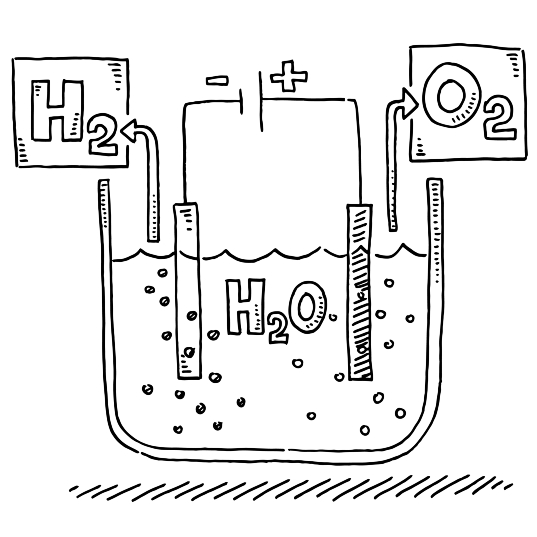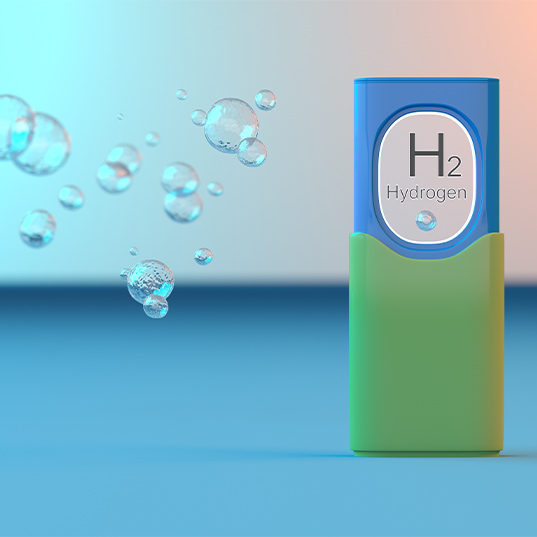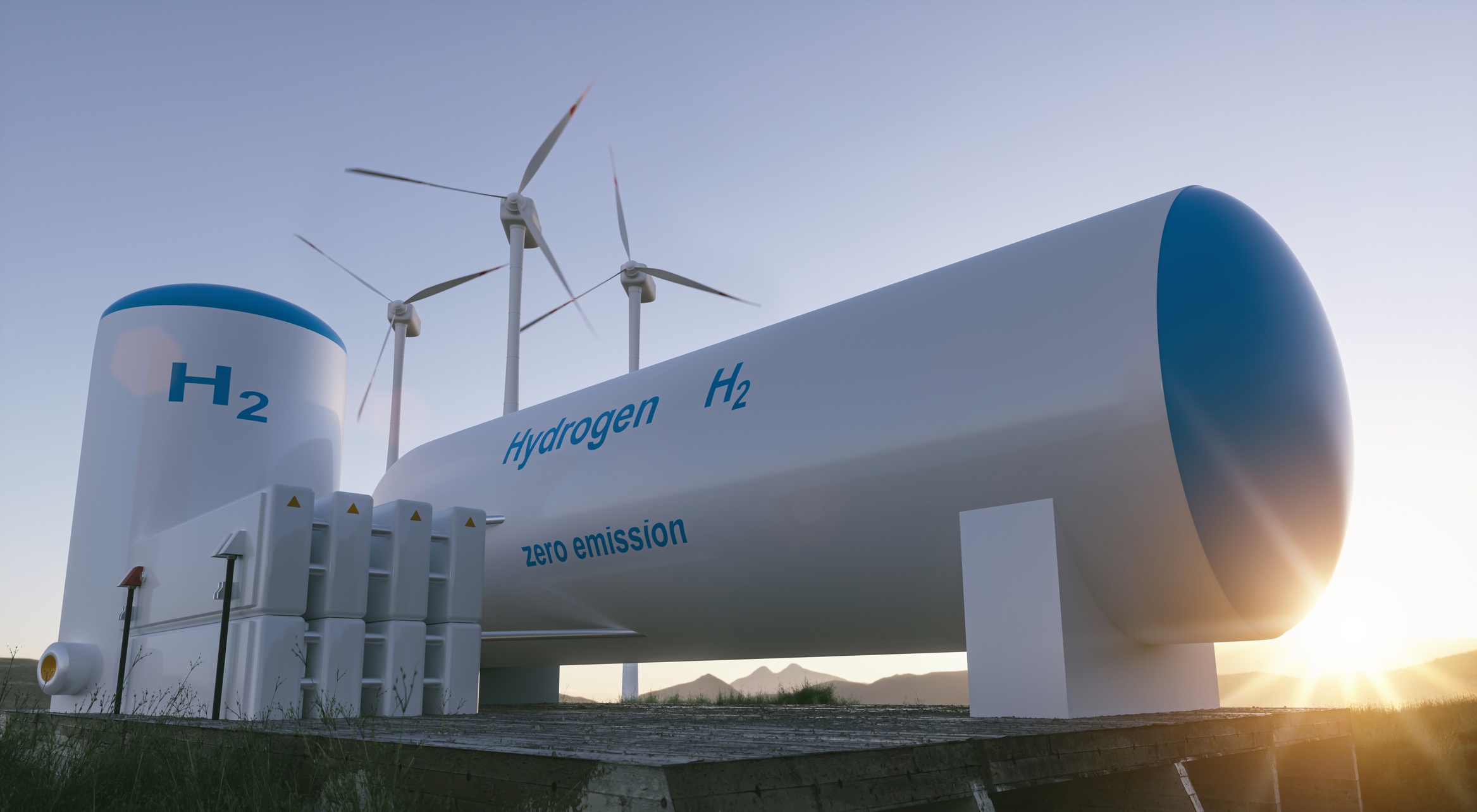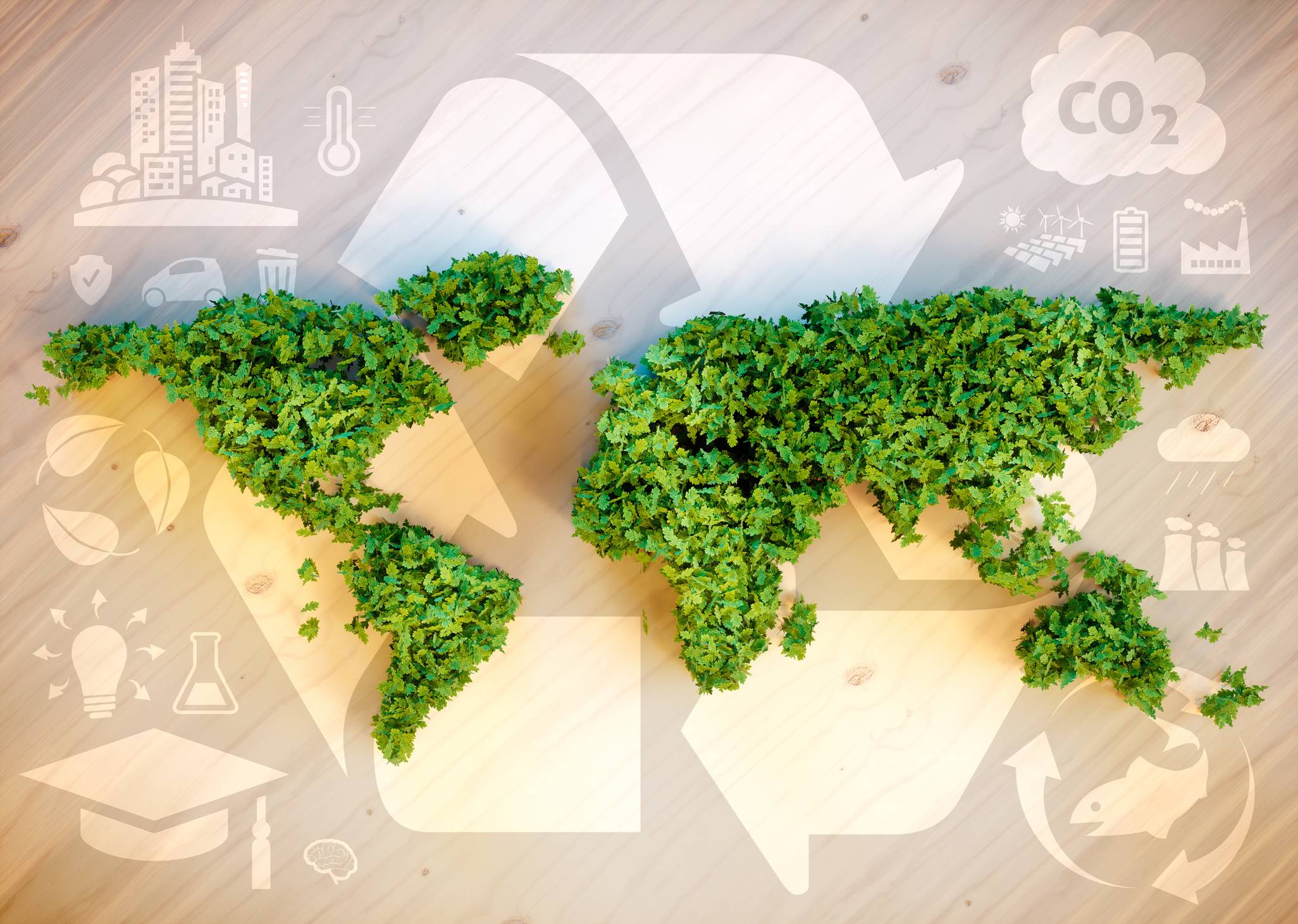What is green hydrogen?
Green hydrogen could become the sustainable fuel to replace fossil fuels in sectors that are difficult to decarbonize
Over 125 years ago, Jules Verne told us about green hydrogen. He mentioned it in his novel The Mysterious Island… "And what will they burn instead of coal?… Water!...Water decomposed into its primitive elements by electricity… will one day be employed as fuel.”
But we still haven’t managed to turn what the author related, about this form of renewable energy and the production of green hydrogen, into reality. Today fossil fuels are still part of our daily lives and industrial development. Achieving a sustainable future depends on us bringing about an energy transition, unreservedly committing to renewable energies and fuels such as green hydrogen.
What you’ll find in this article
- What is green hydrogen and how is it obtained?
- Types of hydrogen
- Advantages of green hydrogen
- Barriers to the development of green hydrogen
- What is it used for?
What is green hydrogen and how is it obtained?
Governments and institutions across the world are committing themselves to achieving emission-neutral status over the decades to come. The European Commission, for one, is proposing a climate-neutral Europe by 2050. In this context, green hydrogen looks like being the great ally for being able to meet this target. European Union considers hydrogen to be a key fuel and developing the technology to expand its use is a priority for the Commission. As such, it has become one of the features of its NextGenEU funding packages.
“Europe considers hydrogen to be a key fuel and developing the technology to expand its use is a priority for the Commission”
Hydrogen is the most abundant chemical element in the world. It is light, storable, energy-dense, and in itself does not generate direct polluting emissions, or greenhouse gases. But not all hydrogen is sustainable. That of interest to us and the planet has to be green.
So simple? You must be thinking: “If hydrogen is so marvelous, why doesn’t everything already use it?” Because more research and development still needs to be invested, and governmental policies introduced to promote hydrogen, in order to overcome the barriers to its use. Also, not all hydrogen can help us achieve carbon neutrality.
Types of Hydrogen
We currently have several different technologies that permit us to obtain hydrogen. But not all are sustainable. A color code has been established to differentiate between the four types, based on the impact and emissions each generates:
 Grey hydrogen: produced with fossil fuels and emits a lot of CO2.
Grey hydrogen: produced with fossil fuels and emits a lot of CO2.- Blue hydrogen: produced with fossil fuels through carbon capture and storage technologies (less polluting than grey). Around threequarters of the hydrogen produced today comes from natural gas. Blue hydrogen could be an initial solution, while green hydrogen production capacity, and storage for industries such as steel, come on stream. But blue hydrogen does not eliminate carbon emissions, only reduces them.
- Turquoise hydrogen: produced by pyrolysis from natural gas, but still a fossil fuel and, as such, is not emission-free.
- Green hydrogen: a clean fuel that permits the storage and use of energy from renewable sources. It is already considered the substitute for fossil fuels in industries that are difficult to decarbonize and heavy transport sectors such as maritime transport and aviation. Governments and economic sectors alike have recognized that green hydrogen will be an essential pillar for a totally sustainable energy transition.The best known option for producing green hydrogen is electrolysis of water from renewable electricity. It consists of the decomposition of water (H2O) into oxygen (O2) and hydrogen (H2) gases by virtue of a direct electric current traveling across electrodes in the water.
Advantages of green hydrogen
Green hydrogen has been lined up to be one of the key components of the unavoidable energy transition the main economies in the world have to lead to achieve carbon neutrality and stop climate change. The advantages of this clean fuel speak for themselves in terms of the significance of the new energy system:
- Clean energy: the only waste it emits is water
- 100% renewable: generated using natural resources that don’t run out, such as wind power and solar energy.
- Storable: can be compressed and stored in ad hoc tanks for long periods.
- Transportable: it is a very light element and thus tanks of compressed hydrogen can be handled more easily than, say, lithium batteries.
Barriers to the development of green hydrogen
Electrolysis only produces around 5% of hydrogen worldwide. The current production of hydrogen is based mainly on natural gas and coal, which together represent 95%. Grey hydrogen production represents the emission of around 830 million tonnes of carbon dioxide per year, equivalent to the CO2 emissions of the United Kingdom and France combined.
“Only 5% of hydrogen produced today is green hydrogen”
Today, there is still hardly any hydrogen production from renewable sources, although in Spain, for example, the first green hydrogen plant in the country is now operating. The cost of production is still a handicap and must be done much more efficiently. Greater investment is needed so that production, compression, transport and storage technologies can be developed to reach competitive prices.
 But the fall in renewable energy prices has opened a window of opportunity for costs to become more accessible. Solar electricity is 10 times cheaper than a decade ago and wind power costs less than half, developments that can make the electrolysis process more economic. Its installation requires important investment. It is said that USD 300 billion will be needed over the next decade worldwide to carry out the research and build the infrastructure.
But the fall in renewable energy prices has opened a window of opportunity for costs to become more accessible. Solar electricity is 10 times cheaper than a decade ago and wind power costs less than half, developments that can make the electrolysis process more economic. Its installation requires important investment. It is said that USD 300 billion will be needed over the next decade worldwide to carry out the research and build the infrastructure.
Yet, according to a report by BloombergNEF (BNEF), with the right kind of policies to support its development, the demand for green hydrogen could increase up to 700 million tonnes in 2050, such that the investment in its development might be a cost but it is also a huge financial opportunity.
A door to the future of green hydrogen
Fortunately, this is a good time to be optimistic. A new report from IRENA, the International Renewable Energy Agency, says that green hydrogen could be profitable from 2030 onward. On the one hand, It is hoped that solar and wind power will continue to become more economic; their costs have fallen by between 40% and 80% in the last decade. And then IRENA estimates that the cost of hydrogen installations could fall by around 40% in the near term, and 80% over the long term.
“Green hydrogen could be profitable from 2030 onward”
What is it used for?
Thrust to the fore by the climate emergency, and national commitments to produce net zero emissions, IRENA estimates that hydrogen will represent up to 12% of world energy use by 2050. “Green hydrogen is a radical solution for reaching climate neutrality without compromising industrial growth and social development,” says IRENA Director-General Francesco La Camera.
So, what are the sectors that will most benefit from this clean fuel?
 Sustainable mobility: electric vehicles with hydrogen fuel cells (FCEV) represent a revolution in the energy and transport sectors in using a fuel with a zero CO2 footprint.
Sustainable mobility: electric vehicles with hydrogen fuel cells (FCEV) represent a revolution in the energy and transport sectors in using a fuel with a zero CO2 footprint.- Heavy transport: sectors that are difficult to decarbonize, such as aviation, maritime and rail transport, will find their sustainable solution in green hydrogen. But substituting the heavy fuels used today with hydrogen is not so straightforward. The lower energy density of hydrogen means such transport modes will have to be redesigned for heavier loads.
- Energy storage: thanks to its large volume and long duration, hydrogen will be able to be stored in the same way as strategic reserves like natural gas and oil.
- Industry: hydrogen is already used as a raw material in the chemical industry to obtain ammonia and fertilizers, in the petrochemical industry for oil refining, and in metallurgy for making steel. But they don’t use green hydrogen. When we are able to completely replace grey hydrogen by renewable energy in these sectors, we will be able to obtain, for example, zero-emission steel.
- Domestic use: there are already various sustainable projects underway that aim to substitute the natural gas network for a green hydrogen grid that supplies electricity and heat to homes without producing polluting emissions.
The future is getting ever nearer. The project in Spain mentioned above is called OCEANH2, the first offshore green hydrogen generating, storage and distribution plant in Spain. The project proposes a modular, flexible and smart optimization adapted to the new market paradigm using renewable offshore electricity generation and uniting wind and floating photovoltaic technology.
The journey from fossil fuels to green hydrogen has only just begun. Big news is expected of hydrogen as a main player in sustainable development.
Sources:
IEA, Agencia Internacional de Energía, BBC, Alianza Europea del Hidrógeno Limpio, Cinco Días, IRENA
https://www.sostenibilidad.com/energias-renovables/futuro-sostenible-reto-transicion-energetica/







